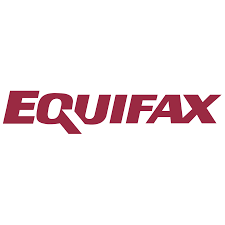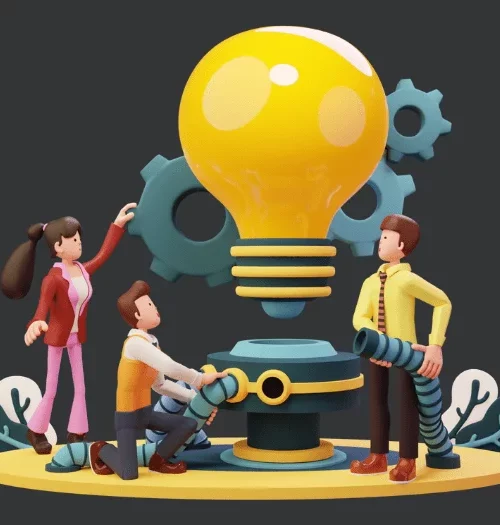An Introduction To Credit Bureaus



What is a Credit Bureau?
A company which collects information relating to the credit ratings of individuals and makes it available to banks, finance companies, etc. – The Oxford English Language Dictionary.
The third most important entity in the loan origination system (first and the second being the borrower and lender) is the credit bureau. Credit bureaus (also referred to as Credit Information Companies or CICs) in India are RBI-regulated institutions that determine the creditworthiness of an individual or a business entity.
Fact Chat #1:
Credit bureaus are only responsible for determination of one’s creditworthiness and have NO say in making credit-related decisions, Whatsoever!
The main function of the credit bureaus is to gather information from banks (public and private sector banks), lenders (NFBCs and microfinance institutions), credit card issuers and auto finance or housing finance companies. The RBI mandates all types of creditors to share consumer credit information with the credit bureaus periodically.
The Four Credit Bureaus of India
In India, there are four credit bureaus and they go by the names – CIBIL, Equifax, CRIF Highmark and Experian.

CIBIL
- CIBIL (Credit Information Bureau Ltd) was founded in 2000 and is a part of the US-based company TransUnion.
- It is the most popular and preferred credit bureau in the country.
- CIBIL offers CIBIL Detect which is the country’s first data repository on high risk activity and CIBIL Mortgage check which is the first central database on mortgages.
- CIBIL holds over 1000 million credit scores that belong to both individuals and businesses in India.
- In March 2020, CIBIL updated its scoring algorithm to include more data points (data from 36 months rather than 24 months of credit history will be taken as accountable) and thus offers a more comprehensive score.

Equifax
- Equifax is originally an information systems company, based in Atlanta, Georgia.
- In 2010, Equifax came to India and was registered by the RBI as Equifax Credit Information Services Private Limited (ECIS).
- In 2011, Equifax launched a Microfinance bureau in India that amassed data from several microfinance lenders across the country.
- Today, Equifax has grown tremendously to cover microfinance, banks, NBFCs, and insurers, and is providing demographic and repayment information about millions of Indians.
Fact Chat #2:
Credit bureaus make use of public records in addition to the information collected from banks and NBFCs to generate a credit report!

CRIF Highmark
- CRIF High Mark is based in Mumbai.
- It holds the country’s first and world’s largest Micro-Finance Bureau Database.
- CRIF Solutions is a sister concern, and together the two companies come under the Europe-based, global FinTech company called CRIF.

Experian
- Experian is also one of the RBI-approved credit bureaus in India and has been operating in the country since 2010.
- Since its inception, Experian has partnered with thousands of financial institutions such as banks, NFBCs, microfinances and public sector banks.
- In addition to the credit score services, Experian also offers additional services such as data analytics tools, debt management, fraud management and so on.
A credit score is simply a numerical way of representing how creditworthy you are. It is a three digit number that ranges between 300 and 900. The higher the credit score, the greater are the chances of the loan application being approved.
Fact Chat #3:
In March 2020, CIBIL updated its scoring algorithm to include more data points(data from 36 months rather than 24 months of credit history will be taken as accountable) and thus offers a more comprehensive score!
Suggested alternative reading:
1. Credit utilization Rate (CUR): Also called as credit utilization ratio, CUR is the percentage of the borrower’s total available credit that is currently put to use. In other words, credit utilization is the total amount of debt that the borrower has used when compared to the total amount of credit that has been approved. When a person has a high utilization rate, it is indicative of rising financial burden for the borrower and can therefore negatively impact the credit score.
2. Hard enquiries: Credit enquiries can be soft or hard. Hard enquiries are those that get registered on the credit report. They occur when lenders pull the credit report while assessing credit applications (for home loans, student loans, auto loans, credit cards and so on) and this can have significant impact on the credit score. Soft enquiries, on the other hand, do not show up on the credit report and therefore do not impact the credit score. Lenders with technological solutions and advanced algorithms for the loan origination process, lay higher importance on hard enquiries (for a minimum of 6 months to 1 year) in order to achieve greater accuracy in the process.
Fact Chat #4:
Credit bureaus have been slashing down the credit scores of Indians availing moratorium, in spite of the instructions to not do so from the RBI.
3. Credit Mix: The credit portfolio of an individual must have a good mix of secured and unsecured loans. When a good mix of both types of loans is settled every month, it makes the individual less risky. For instance, a salaried individual who pays regular EMIs on a car or home loan and never defaults on credit card payments or any loan without a collateral, indicates good credit behaviour. A high percentage of unsecured loans is generally considered more cautiously by lenders in loan origination.
4. Payment history: Credit history is so important that even one missed payment can have an impact of the credit score. Missed credit card payments and overdue EMIs can bring down the credit score considerably. CIBIL, which is the most preferred credit bureau of the country, gives 30% weightage to credit history while calculating credit scores.
5. Credit history: A long credit history with responsible repayments and creditworthy behaviour, makes it easy for lenders to take a decision during loan origination.
You may also like:
What type of content is presented in a credit report?
- The main content of a credit report is the credit score, which is a statistical score of an individual’s creditworthiness. To support this data, factors contributing to the score (both negative and positive) are also listed in the report.
- Personal details: Personal details such as address, age, gender, employer details, and business associations and any kind of relationships are also listed.
- Credit enquiries made in the last one year or for a longer time period (along with the amount, loan type and enquirer) are given.
- Finally, information pertaining to insolvencies, defaults, court actions (if any) can be obtained through a credit report.
Fact Chat #5:
Credit scores for the same entity differ among the four bureaus because of the difference in the algorithms used, the method of data processing and other internal reasons.
Conclusion
The pandemic hit us in March! Since then, there has been loss of jobs, lowered employment opportunities, reduced income flow and ultimately the greater need for loans. However, the question is if the lending industry is prepared to handle the new rush in a more efficient and cost-effective way? With credit bureaus revamping algorithms and updating credit scores, are lenders fully equipped to take on the challenge? What are some of the ways to build a robust loan origination system?
Related Post

How Loan Origination is done through Digital Onboarding
Nowadays, financial lending organisations are finding ways to integrate their

Navigating the Regulatory Landscape: A Dive into Understanding NBFC Compliances
Overview Delve into the realm of financial compliance for Non-Banking

How Lending Companies can disburse the loan in 10 mins
Technology has woven its magic in the 21st century across
- Email: [email protected]
- Sales Enquiries: +91 9344243151
- HR Enquiries: +91 9080996576
Quick Links
Resources
© 2024 LightFi India Private Limited. All rights reserved.
(Formerly known as Habile Technologies)